Emotional Expression Improves the Blood
I am very proud to present the first study published in a medical journal, documenting positive effect of emotional expression on blood coagulation, tested with dark field microscope.
It started with a little experiment with friends, wondering how the blood looks like before and after a session? The result was astonishing to me. It had changed within 1,5 hours. The body had restored its self-regulatory properties! This was so exciting, that I did a few more of these before-and-after experiments, all with the same results! Wow!
Professor Zilvinas Padaiga encouraged me to publish these results in a medical magazine. He taught me how to research, how to format the article in a professional way, and he put it together in a professional style. Thank you for all your trust in the work we do, and all the effort and time you spent on it. You are a genius with heart!
I would like this article to be an inspiration, and any feedback is very welcome. And: If you are working on similar projects and would like to connect with me, I would be delighted!
Health & Happiness
Sangitama
Demonstration of a Positive Effect of Emotional Expression on Blood Coagulation is Possible with Dark Field Microscopy
By: Sangitama M. Huebner, College of Addiction Studies, Humaniversity Foundation, NetherlandsPublished: Polish Annals of Medicine, 2010;17(1): 54-62
Abstract
Introduction. Effects of psychological stress on blood hypercoagulation have been shown by a number of authors. In healthy subjects acute mental stress simultaneously activates coagulation and fibrinolysis within a physiological range. However, in patients with atherosclerosis or in healthy subjects under acute or chronic psychosocial stressors (e.g. exam, earthquake, blood donation, job strain, low socioeconomic status, social isolation) hypercoagulable states reflected by an increased number of procoagulant molecules and by reduced fibrinolytic capacity might develop. There is also evidence that points to hypercoagulability in depression.
Aim. The aim of this paper was to demonstrate the positive effect of emotional expression on blood coagulation using dark field microscopy.
Materials and methods. Cases of three patients suffering from psychological stress are presented. Humaniversity therapy was applied for all cases integrating a variety of therapeutic techniques, such as: emotional expression, cognitive change, integrity of a holistic approach, touch and positivity. Dark field microscopy was used before and after the sessions to evaluate the effect of therapeutic work on blood coagulation.
Results and Discussion. The results of three cases showed the immediate effect of emotional release on blood coagulation. After the sessions lasting from 1–1.5 hours, all three cases reported improved emotional well-being with changes in blood clotting from levels 4 and 5 (light severe and severe clotting) to no clotting at all.
Conclusions. A positive objective effect of emotional expression on blood coagulation can be demonstrated using dark field microscopy.
Introduction
Effects of psychological stress on blood hypercoagulation have been shown by a number of authors [1, 2, 7, 8, 11, 13]. In healthy subjects acute mental stress simultaneously activates coagulation and fibrinolysis within a physiological range. However, in patients with atherosclerosis or in healthy subjects under acute or chronic psychosocial stressors (e.g. exam, earthquake, blood donation, job strain, low socio-economic status, social isolation) hypercoagulable states reflected by an increased number of pro-coagulant molecules and by reduced fibrinolytic capacity might develop. There is also evidence that points to hypercoagulability in depression [8]. Other authors suggest that superimposed life stress on top of chronic stress (as seen in Alzheimer caregivers) may elicit a hypercoagulable state that could contribute to coronary heart disease and to an increased overall mortality rate in this population [7]. The relationship between vital exhaustion and a risk of myocardial infarction shown by researchers [11] may be mediated in part by an imbalance between blood coagulation and fibrinolysis. Older age has been shown to be an additional risk factor for hypercoagulation [13].
The Humaniversity institut specialize in helping patients via Humaniversity Therapy (emotional expression, awareness and healing, etc.) to deal with acute and chronic psychological stress, depression and addictions [4]. The criteria for an evaluation of success using Humaniversity Therapy are rather subjective – patients’ satisfaction with their health, mental and physical well-being, improved capacity to deal with daily stressors, etc. Therefore, an objective method to demonstrate the effectiveness of the emotional work offered by Humaniversity institute was sought-after. Dark field microscopy (DFM) was selected – a method with an easy set up for a patient and a therapist that can be immediately evaluated by both and reconstructed by others [6].
Aim
The aim of this paper is to demonstrate the positive effect of emotional expression on blood coagulation using DFM.
Materials and Methods
Humaniversity therapy This therapy integrates a variety of therapeutic techniques that can be applied to group or individual therapy. Each treatment includes emotional expression, cognitive change, integrity of a holistic approach, touch and positivity. Depending on a patient’s needs, other forms may be used as well: encounter, catharsis, creativity, etc. [4].
Psychokinesiology This method is used to detect emotional stress via muscle testing. It allows the practitioner to discover the details of stress mainly resulting from unresolved conflicts and trauma from the past such as time, place, experienced feelings [7].
Mental field therapy This method is used to assist in trauma healing and cognitive change. It is based on stress reduction through the use of acupressure points while saying stress reducing sentences [10]. This technique was originally discovered by Roger Callahan, and then developed by Dietrich Klinghardt. Similar techniques are therefore known as TFT (Thought Field Therapy) by Roger Callahan, and EFT (Emotional Freedom Technique) by Gary Craight [3, 5, 10].
DFMThe advantage of DFM is that indirect light created by a special condenser focuses on the object and creates a picture with light structures on a dark background. The outlines of the object are better seen than with the usual light field microscope [12].
Blood taking procedure Blood is taken on an empty stomach. The intake of water or herb tea is permitted. Blood testing and individual session time starts at 9.00 a.m. A recheck is conducted after the session lasting from 1–1.5 hours after the first blood taking. The patient does not eat meanwhile. Drinking herb tea or water is admitted. A drop of blood is taken without squeezing or pushing the blood out of the finger, or ear lobe if preferred. The first drop is removed into a tissue. The second drop is transferred to a glass without touching it and than is put on the objective glass. This sample is taken just in case the first one is unable to be used. The photos are taken from the center part of the sample.
Levels of blood clotting Using DFM we can see five different levels of blood clotting – from light to severe. These levels are used as a standard measurement for this research (Fig. 1–5).
To simplify the results no attention will be given to the conditions of white blood cells or plasma.
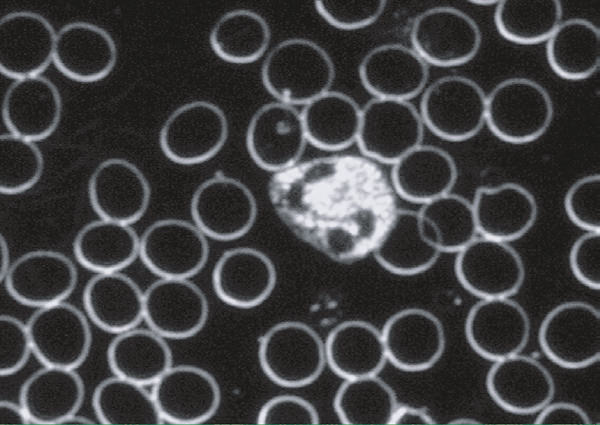
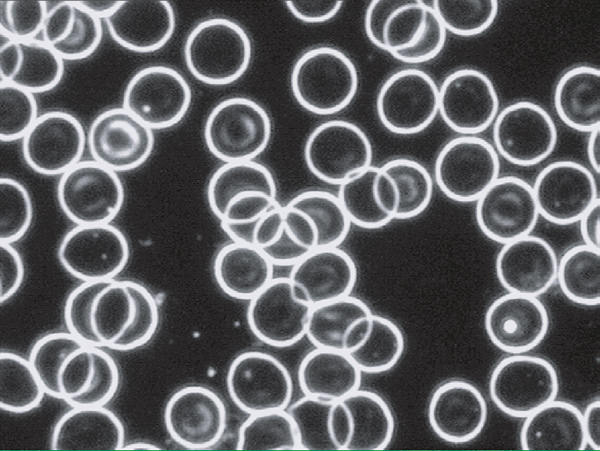
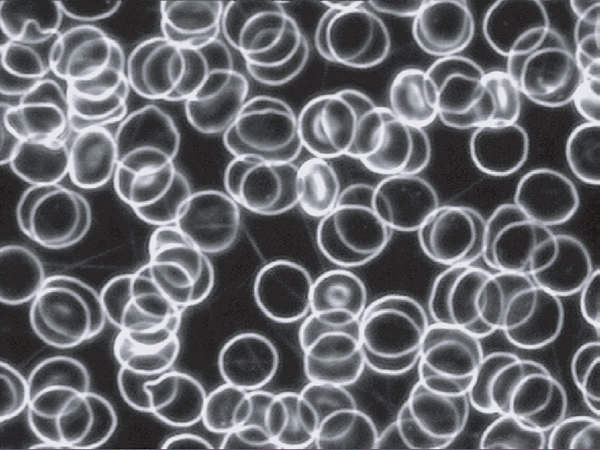
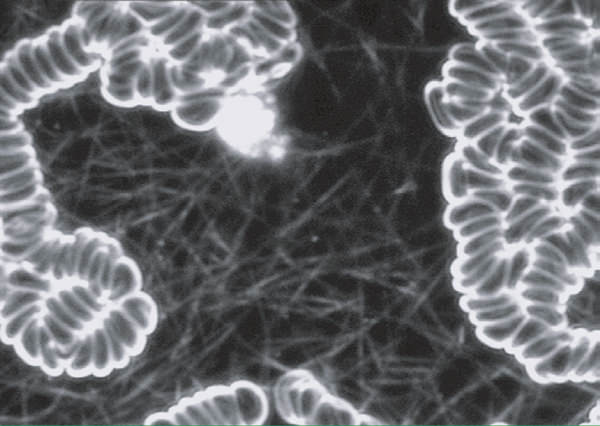
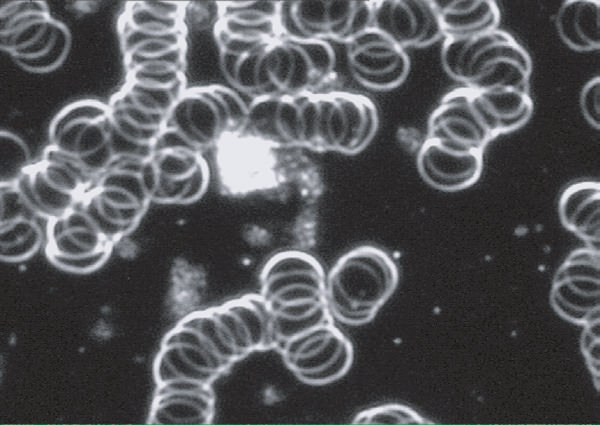
These photos illustrate how erythrocytes can get closer and clump until they form so called “money rolls” [6]. Figure 2 shows just a little departure from the healthy state (Fig. 1). Level 3 shows that self-regulatory functions of the body are getting disturbed, and the clotting of erythrocytes starts to dominate (Fig. 3). Levels 4 and 5 (Fig. 4, 5, respectively) show the formation of “money rolls” and the twisting of “money rolls”.
Results
In this paper three cases are presented. As described in the methodology, the therapy consisted of emotional expression. Patients were encouraged to discover and express the repressed emotional content of events connected to their conflicts, followed by a healing phase involving expression of love and care in that situation, and positive affirmations.
Case 1 Complaint: Mrs. B. has a good intention to lose weight and to follow a healthy diet, but after a while she goes back to eating sweets and foods high in calories and low in nutrients (e.g. cakes). She feels that she cannot stop worrying about her family. The blood analysis shows a picture with blood clotting levels 4 and 5 (Fig. 6, 7).
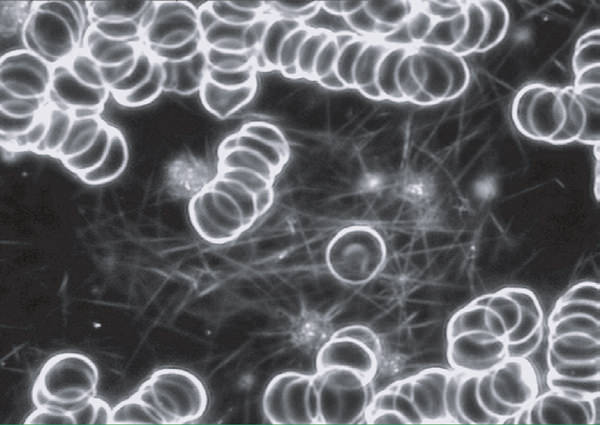
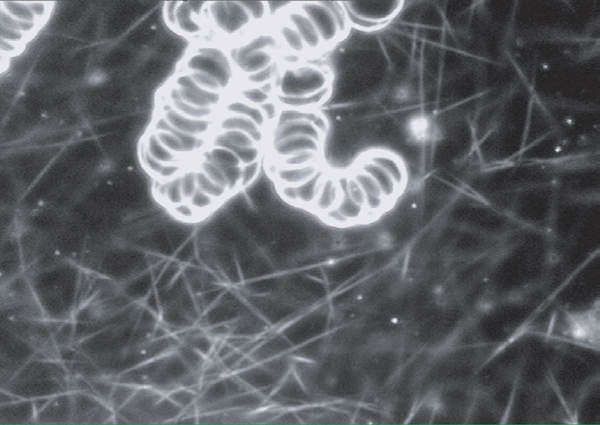
Fig. 6, 7. Levels 4 and 5 of blood clotting before therapeutic work in Case 1
During the session the emotional conflicts were addressed to her. The issue of putting herself under too much pressure appeared. She kept complaining that nothing was good enough and that it was her fault. The talk was started about the time when she was separated from her mother, due to hospitalization with pneumonia at three years old. During this time she felt the pressure of the entire situation, but never expressed anything. She recognized a lot of sadness developing, and saw that she sought for situations in life, which put her under more pressure. After the release of the sadness she soon felt a lot lighter and her worries disappeared. She felt that she was fine the way she was. A photo after the session showed that blood clotting levels changed from 4 and 5 into level 1 (Fig. 8, 9).
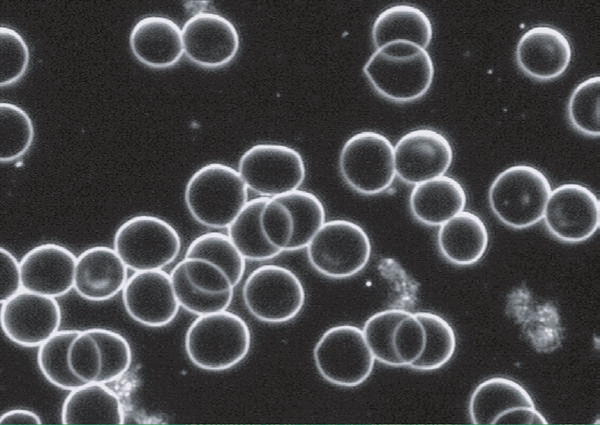
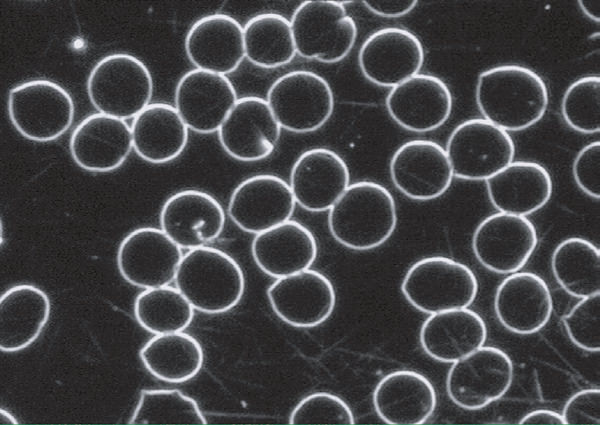
Fig. 8, 9. Level 1 blood clotting after therapeutic work in Case 1
Case 2 Complaint: the patient (Mrs. C. H.) has hives all over her body; she does not use medication in general, except histamines occasionally. Presently it is an acute problem. DFM indicates blood clotting level 5 (Fig. 10, 11).
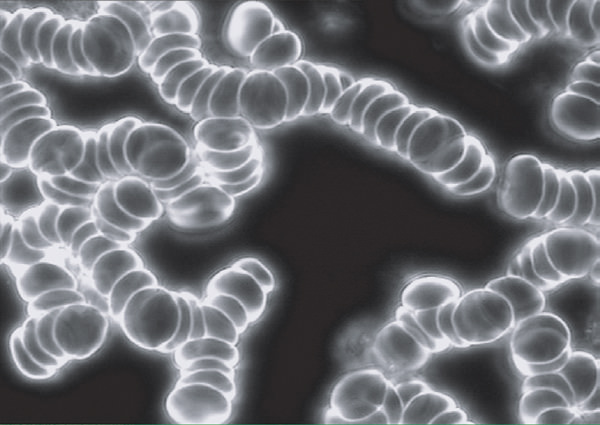
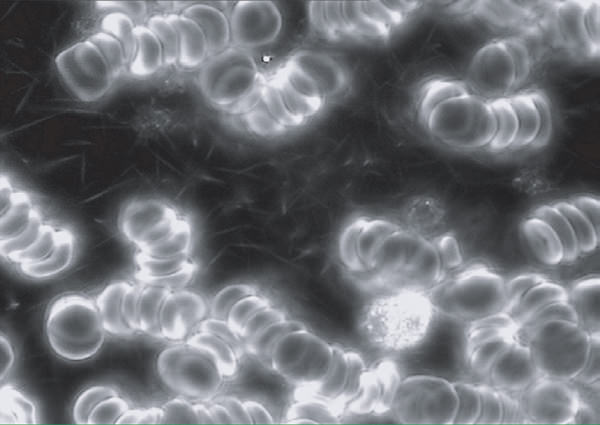
Fig. 10, 11. Levels 4 and 5 of blood clotting before therapeutic work in Case 2
During the session the emotional issues concerning her relationship with husband were discussed, as well as the emotions caused by the loss of her child. After the session she felt emotionally light and open. DFM picture after the session demonstrated reduced clotting to levels 2 and 3 (Fig. 12, 13).
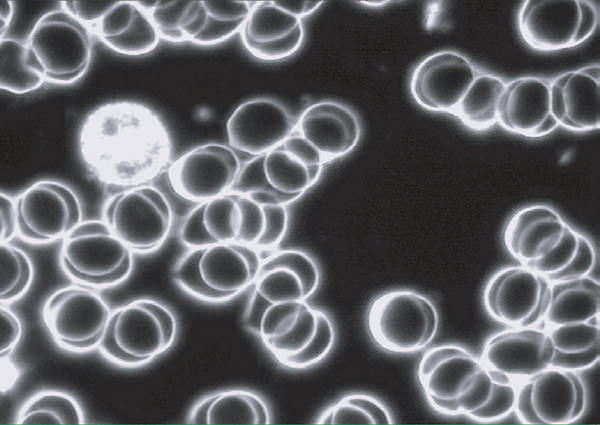
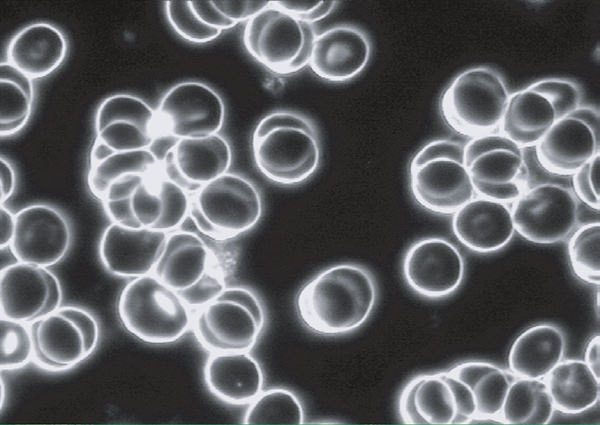
Fig. 12, 13. Level 1 of blood clotting after therapeutic work in Case 2
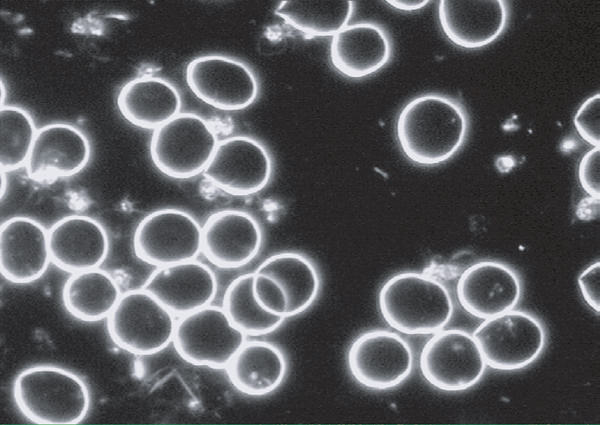
Fig. 14. Levels 4 and 5 of blood clotting before therapeutic work in Case 3
During the session the emotional issues concerning difficulties to obey her father’s commands and situations of punishment and humiliation connected to her resisting his will were discussed. She also became aware of a pattern of control and manipulation to get things her way, and she released anger and frustrations. After the session no blood clotting was observed (Fig. 15). Mrs. A. R. felt relieved and confident enough to begin the workshop.
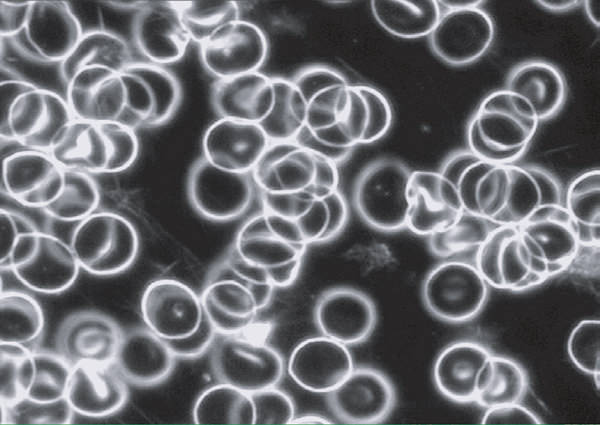
Fig. 15. No blood clotting after therapeutic work in Case 3
Discussion
Usually the effects of therapeutic techniques (such as emotional expression) are not evaluated using objective methods. The patient assesses the immediate and lasting effect of therapy as a subjective feeling of relief, relaxation, increased awareness, centeredness, etc. Therefore, it was interesting whether these subjective evaluations of a rapid change in emotional well-being had any effects on blood clotting. Therefore, DFM method was used to look at changes in hypercoagulation which is reported to be a consequence of acute and chronic psychological stresses [1, 2, 7, 8, 11, 13].
DFM allows one to evaluate the shapes and other properties of individual blood cells, indicating nutritional and other conditions which can adversely affect health. The advantage of this analysis over standard blood tests, which detect chemical changes in the blood, is the possibility to detect disorders sooner, when problems are in their infancy stages. By monitoring the blood’s condition, a medical professional can assist in “balancing” the blood by giving dietary and lifestyle recommendations which can enhance health, or eliminate any factors that might increase blood clotting.
The results of cases presented here show an immediate effect of emotional release on blood clotting. After sessions lasting from 1–1.5 hours all three cases reported an improved emotional well-being with impressive changes in blood clotting from levels 4 and 5 to no clotting at all.
Many factors might cause hypercoagulation (e.g. electromagnetic field disturbances, smoking, alcohol, emotional stress, constipation, medication, fatty food and acid-forming food such as excessive proteins, toxic stress due to heavy metals, xenobiotics, excitotoxins) [12]. It is interesting that when releasing just one of them (emotional stress), immediate objective changes were observed. It is also impressive that red blood cells that were clotting together could detach from each other within such a short time without any medical intervention, just as a result of changing the emotional state of a person. Using the available evidence some explanation for these observations will be provided .
Rau et al. [12] has discovered that the formation of “money rolls” of erythrocytes is a consequence of a lack of their electromagnetic charge. Erythrocytes are normally positively charged on the surface, so in order for them to clump they must become neutralized. Neutralization might be caused by excessive protein consumption, etc. The proteins cover erythrocytes and neutralize the surface charge. Without this magnetic repulsion red blood cells clump together. Furthermore, erythrocytes do not respond to the magnetic input of the conductive system of the heart. In a healthy body the conductive system lets red blood cells pulsate charging them with a voltage. A protein-reduced (e.g. vegetarian) diet over a period of time might clear the blood and red blood cells from excess protein and erythrocytes might regain their ability to detach. However, it is not clear how their detaching is connected to emotional work.
For further research, it would be interesting to assess the duration of the positive effect of emotional expression on blood clotting. Apart from a subjective evaluation of impaired emotional well-being, DFM as a cheap and easy method might be used to establish the frequency of therapy needed in individual cases.
Conclusion
A positive objective effect of emotional expression on blood coagulation can be demonstrated using DFM.
References
- de Boer D., Ring C., Curlett A. C., Ridley M., Carroll D.: Mental stress-induced hemoconcentration and its recovery: A controlled study of time course and mechanisms. Psychophysiology, 2007; 44 (1): 161–169.
- de Boer D., Ring C., Wood M., Ford C., Jessney N., McIntyre D., Carroll D.: Time course and mechanisms of mental stress-induced changes and their recovery: Hematocrit, colloid osmotic pressure, whole blood viscosity, coagulation times, and hemodynamic activity. Psychophysiology, 2007; 44 (4): 639–649.
- Callahan R., Trubo R.: Tapping the healer within. Piatkus Books Ltd., London 2001.
- Carrivick A. D.: Veeresh: Bliss Beyond Fear. Humaniversity Press, Egmond Aan Zee 2001.
- Feinstein D., Eden D., Graig G.: The healing power of EFT and energy psychology. Piatkus Books Ltd., London 2006.
- Häring Ch. H.: Dunkelfeld Blutdiagnostik, Bioelektronische Diagnostic nach Vincent. Pro Medicina, Wiesbaden-Naurod 2001: 109.
- Klinghardt D.: Lehrbuch der Psycho-Kinesiologie. Bauer, Freiburg 1999: 58–62.
- Klinghardt D., Schmeer-Maurer A.: Handbuch der Mentalfeld-Techniken. VAK Verlags GmbH, Kirchzarten 2009: 47–53.
- von Känel R., Dimsdale J. E., Patterson T. L., Grant I.: Association of negative life event stress with coagulation activity in elderly Alzheimer caregivers. Psychosom. Med., 2003; 65 (1): 145–150.
- von Känel R., Mills P. J., Fainman C., Dimsdale J. E.: Effects of psychological stress and psychiatric disorders on blood coagulation and fibrinolysis: a biobehavioral pathway to coronary artery disease? Psychosom. Med., 2001; 63 (4): 531–544.
- Kop J. V., Hamulyak K., Pernot C., Appels A.: Relationship of blood coagulation and fibrinolysis to vital exhaustion. Psychosom. Med., 1998; 60: 352–358.
- Rau T., Biologische Medizin. Fona Verlag AG., Lenzburg 2007: 96–97.
- Zgraggen L., Fischer J. E., Mischler K., Preckel D., Kudielka B. M., von Känel R.: Relationship between hemoconcentration and blood coagulation responses to acute mental stress. Thromb. Res., 2005; 115 (3): 175–183.
